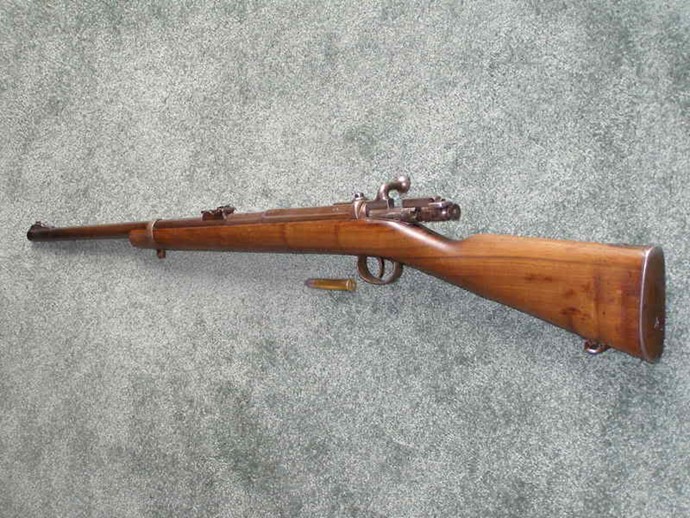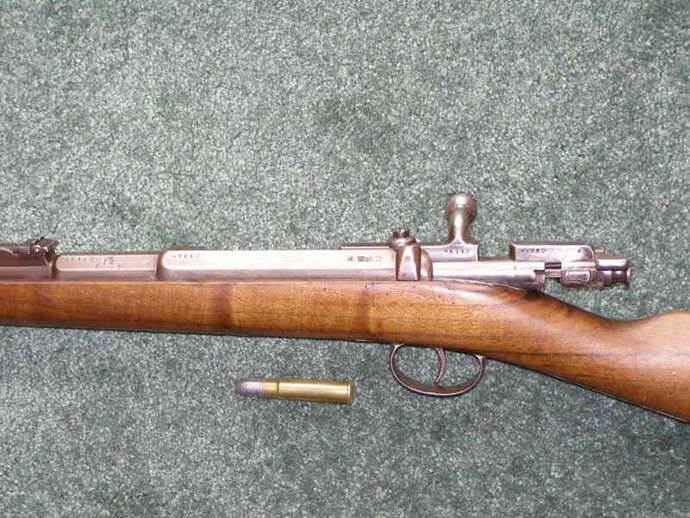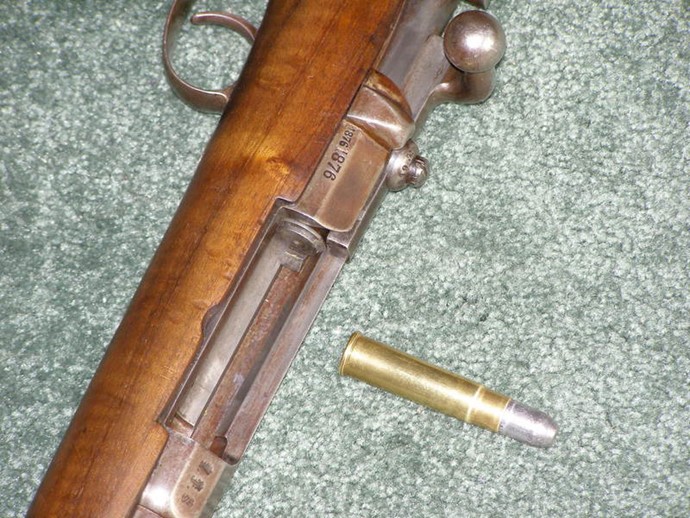: I've noticed in the old issues of the CBA magazine, there are several fellows shooting these old rifles, and that most every one of them is shooting .446” diameter bullets.
: I too have an 1871 Mauser, the Carbine model, with it's bent bolt and 20” barrel. I received it in an estate settlement from my now-departed hunting buddy, Art Edwards.
; Unfortunely, some where along the line, someone shortened the stock from it's original (as far as I can find out) full length stock. It was tastefully done however, not merelly chopped off as I've seen since on others.
: The bore was in a terribly pitted condition & I suspect “Eddie” did little more than relegate it to a far corner of his safe.
: Upon inspection I found exceptionally deep rifling, seemingly deeper than the suggested .446” Lyman bullet would suggest. I attempted to make brass from some magnum brass I had, quite successfully too, however I also found they extracted poorly, of course. Too - any bullet over .446” diameter wouldn't chamber. I slugged the bore to find a .457” groove diameter and a .434” land to land measurement. I have since found out that the oversize groove diameter was cut on purpose to 'hold' fouling.
: As I desired to shoot full size bullets and not undersized paper patched ones, I purchased a .450 Alaskan Reamer from Dave Kiff of Pacific Tool and Gauge fame. they didn't want to grind the pilot of the reamer down to my requisite .435", so I tackled that myself. I re-chambered the barrel using the reamer and all went well (after lapping).
: To fire-lapp the bore, I used Lee 460gr. flat nosed slugs with their fairly long nose rding section. The bottom of the grooves looked pretty good, so only the noses of loaded & lubed (soft LBT blue) rounds were rolled in grinding compounds, starting with 120 grit, ending with 400 grit. I used a smokless powder suggested starting load and proceded to firelapp the barrel, a total of 60 rounds, cleaning the bore every. At the end of this firelapping, the bore increased in size by .002", but the grooves went up .001” to .459". the bore now shines it's full length, with only minor pitting, that seems to not pick up any leading. Pushing a tightly patched jag through, feels even, although there is probably a bit of a taper inside. I was concerned the longer case length of the original .43 Mauser would make cast bullets cut rings ahead of the new chamber's end, but that doens't seem to be happening. This is probalby due to low pressure and the WW metal I'm using.
: I am currently using it to fireform my .348 brass for the .458 Alaskan M70 I also built using the same case, but with rim removed and extractor groove re-cut.
: I had desired to use this for the military matchs, but see it's new chamber probably won't allow it. On the other hand, it is a good moose and bear rifle using 505gr. Lee bullets with 76gr. BlackMag 3. The velocity is just over 1,400fps and of course, suitably powerful. Accuracy seems to hold between 2-1/2” and 3" at 100 meters, same as my old 1868 .50/70 Sharps does with altered .515” 420 gr. Lyman as well as Lee 450gr. bullets. The Lee bullets show some tipping in the original lined 1859 barrel's 42” twist.
: I have been looking to trade this original .50/70 1859 lined barrel for something I can shoot long range BP sil with. The barrel was lined and chambered for the .50/70 under the 1867 contract to Sharps. Perhaps this isn't the correct location to post this.
: Do all of these Mauser 1871's rifles have this 11 1/2 deep thou. rifling and tight bores with the well oversize .458 groove diameter, or are the 1871/86 rifles of .446” groove diameter? The model 71's I see listed in CBA magazine are noted as being 1871/86's. I thought the '86 issue rifles were repeaters.













